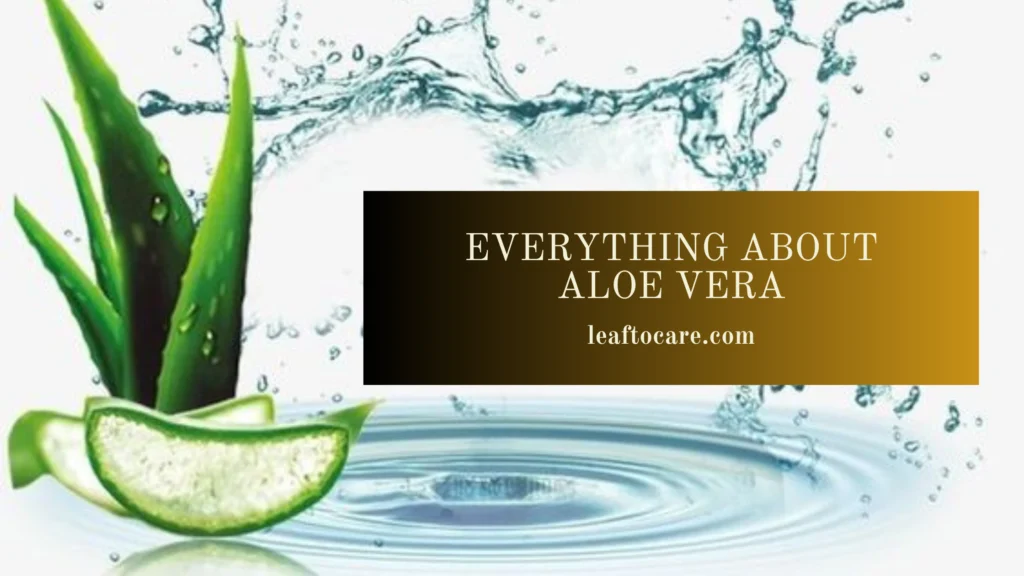Aloe Vera is a cool plant with big, green leaves that people like to keep in their homes because it looks nice. Its name comes from the Arabic word “Alloeh,” which means a “shiny bitter substance,” and the Latin word “vera,” meaning “true.” Many countries, such as Egypt, Greece, Mexico, India, China, and Japan, have used aloe vera for a long time.
Aloe vera is often called the “plant of immortality” and has been loved for centuries because it’s good for your health and skin. Even famous people like Alexander the Great and Christopher Columbus used it for healing wounds. It’s a special plant that helps take care of our skin, especially when it’s sunburned or has rashes. People also use it in drinks.
What is Aloe vera ?
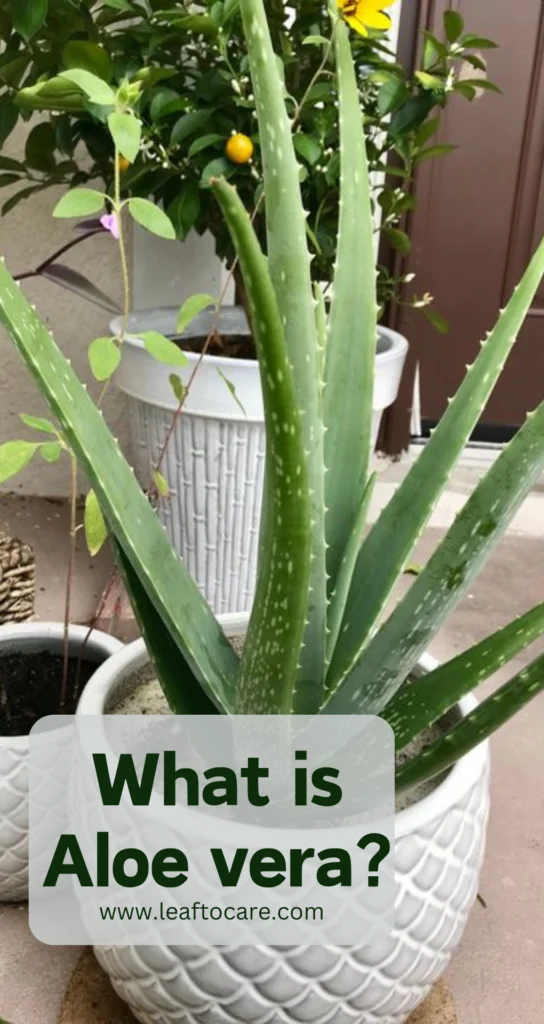
Aloe vera is a cactus-like plant that grows in hot, dry places. The important parts of aloe are the gel and latex. Its scientific name is Aloe barbadensis miller, and it belongs to the Liliaceae family. Aloe vera has thick, fleshy leaves with serrated edges, and it grows in a rosette shape. It’s a fast-growing plant, reaching maturity in 3-4 years, and can be easily grown from mature plants.
.
| Common name | Aloe vera |
| Scientific name | Aloe barbadensis miller |
| Family | Asphodelaceae |
| Plant type | Succulent, perennial, herb |
| Mature size | 1-2.5 ft. tall, 6-12 in. wide |
| Sun exposure | Partial-full |
| Soil type | Sandy |
| Soil pH | Acidic |
| Nativity | Africa |
| Flower colour | Yellow, red |
What’s Inside Aloe Vera?

Aloe vera is really good for you because it’s full of vitamins and minerals. An aloe vera leaf is like a sandwich with three parts. The inside is almost 99% water with some healthy stuff like amino acids and vitamins. The middle is like a yellow sap, and the outside is like a peel with 15 to 20 cells that protect everything. It keeps the inside safe and also helps make proteins.Aloe vera is widely used today in:
- Food – it is approved by the FDA as a flavouring.
- Cosmetics.
- Food supplements.
- Herbal remedies.
Nutrients
Aloe vera includes multiple essential nutrients and chemicals, some of which are as follows:
- Vitamins: A, C, E, B1, B2, B3, B6, B12, and folic acid
- Minerals: Calcium, magnesium, zinc, chromium, selenium, sodium, iron, potassium, copper, and manganese
- Enzymes: Amylase, lipase, catalase, cellulase, and peroxidase
- Amino Acids: Contains 20 of the 22 required amino acids and 7 of the 8 essential amino acids
- Sugars: Monosaccharides (glucose, fructose) and polysaccharides (glucomannans/polymannose)
- Anthraquinones: Aloe-emodin, barbaloin, anthracene, and other phenolic compounds
- Fatty Acids: Cholesterol, campesterol, β-sisosterol, and lupeol
- Hormones: Auxins and gibberellins that help in wound healing and have anti-inflammatory action
These nutrients help many health benefits of aloe vera, including support for the immune system, digestion, and skincare.
Where does aloe vera come from?
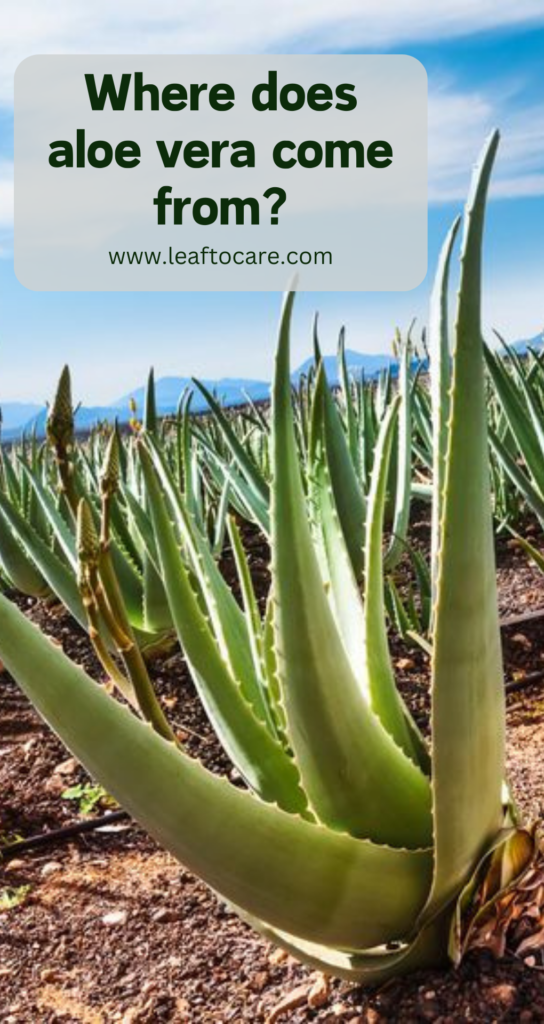
Aloe vera is originally from the Arabian Peninsula, but is now grown in tropical climates worldwide such as the USA, Latin America, Australia, Africa, the Caribbean, India and in Southern Europe. The coldest European countries were the last to discover the natural benefits of aloe vera since it cannot survive in extremely cold climates.
Types

There exist about 500 different species of the aloe vera plant, only three species from these are grown commercially.
- Aloe polyphylla (spiral aloe)
- Aloe aculeata
- Aloe ciliaris
How to grow?
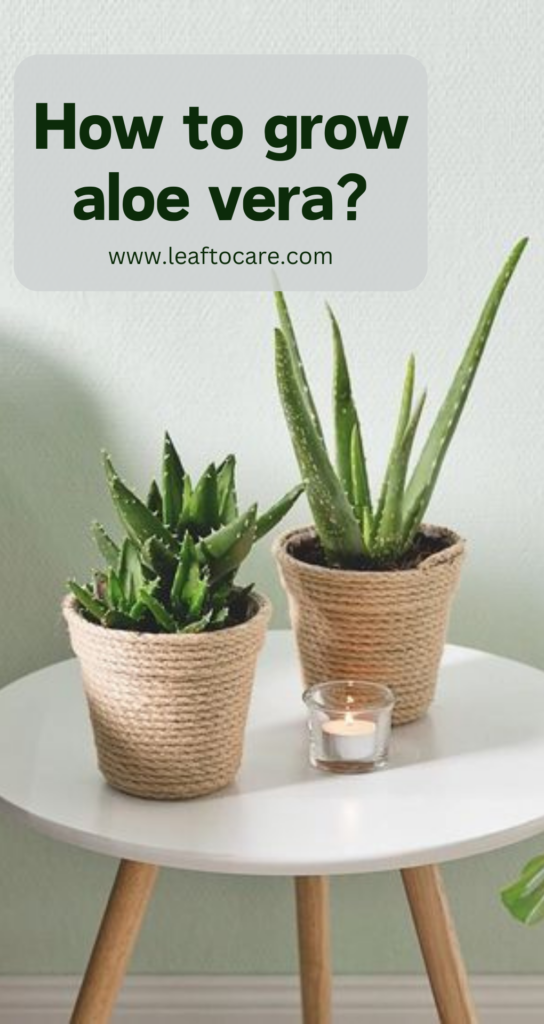
Growing Aloe vera is simple! Fill a pot with soil and find the baby Aloe plants (pups) at the base of the big one. Use a trowel to gently take a pup off, cut the connecting root, and let it dry by a sunny window for a few days. Plant the pup in the pot, covering any roots but keeping the leaves out. Water it, place it by a sunny window, and in 3-4 months, it’ll grow! Aloe vera likes temperatures between 55-85 degrees Fahrenheit, so if it’s cold (below 40 degrees Fahrenheit), bring it inside at night. Aim for 40-45% humidity, and it can handle dry conditions. That’s all you need for a happy Aloe vera plant!
How can I take care of it ?

Taking care of aloe vera is super easy! Once it’s a bit bigger, you don’t have to do much. It doesn’t need a lot of food, but if it’s in a pot, you can give it some liquid plant food once a year. If some leaves look sick, just trim them with clean scissors, but only the top or bottom ones.
Plant it in soil that lets water out, like cactus mix or regular soil with sand. Aloe vera loves sunshine, so put it where it can get sun for at least 6 hours every day. When you water it, let the soil dry between waterings, but don’t keep it dry for too long. In winter, it takes a break and doesn’t need water. If it rains a lot where you live, put some rocks to help water go away. Just do these simple things, and your aloe vera will be happy and healthy!
What kind of ingredients are present in Aloe Vera leaves?
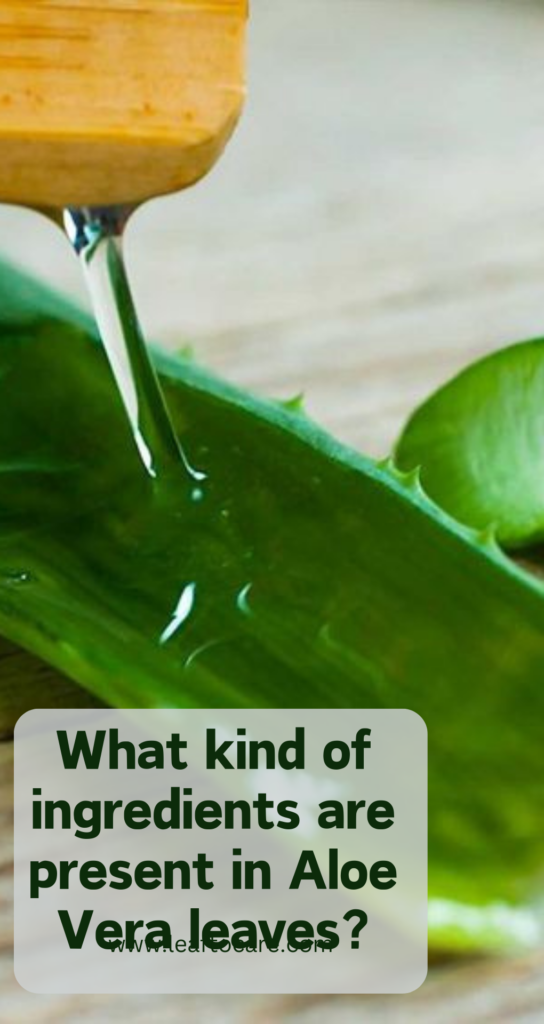
Aloe vera has as many as 75 active ingredients like vitamins A, C and E which are antioxidants, vitamin B12, choline folic acid. It also has enzymes, minerals, sugars, lignin, saponins, salicylic acids and amino acids.
Uses of Aloe Vera

With aloe vera, you can make various things and use it for different purposes. Its gel is excellent for the skin, and you can apply it directly to wounds or sunburns. You can also incorporate it into homemade moisturisers. If you have dry hair, aloe vera gel works as a great natural moisturiser for them. It’s also useful for making a good face mask for your skin. Some people even make juice from it, which can help with digestion and boost your immunity. In essence, aloe vera is a versatile natural ingredient that can be used for skincare, haircare, and overall health.
Skin Care uses
Aloe vera is excellent for skincare. Its gel is a skincare wonder because it contains vitamins, minerals, and amino acids. This is the reason why:
- Hydrates and Moisturizes: Aloe vera gel is a great moisturizer for all skin types because of its high water content.
- Calms Skin Irritation: Its anti-inflammatory qualities make it ideal for reducing psoriasis, eczema, and sunburn.
- Heals Burns and Wounds: The therapeutic properties of aloe vera help in the quick healing of small burns, abrasions, and cuts.
Benefits for Different Skin Types
- Oily skin: Aloe vera is excellent for oily skin because it doesn’t clog pores and is light and non-sticky.
- Dry skin: Its hydrating properties help alleviate dryness and flakiness.
- Sensitive skin: Aloe Vera’s soothing properties make it suitable for sensitive skin, helping to reduce redness and irritation.
DIY Aloe Vera Skincare Recipes
There are two diy Aleo vera recepies:
1. Aloe Vera Face Mask
- Mix 2 tablespoons of aloe vera gel with 1 tablespoon of honey and 1 tablespoon of turmeric powder.
- Apply the mixture to your face.
- Leave it on for 20 minutes.
- Remove with warm water.
2. Aloe Vera Moisturizer
- Blend aloe vera gel with a few drops of your favorite essential oil.
- Apply the mixture to your skin.
- Enjoy it as a natural moisturizer.
How is it used in our products?
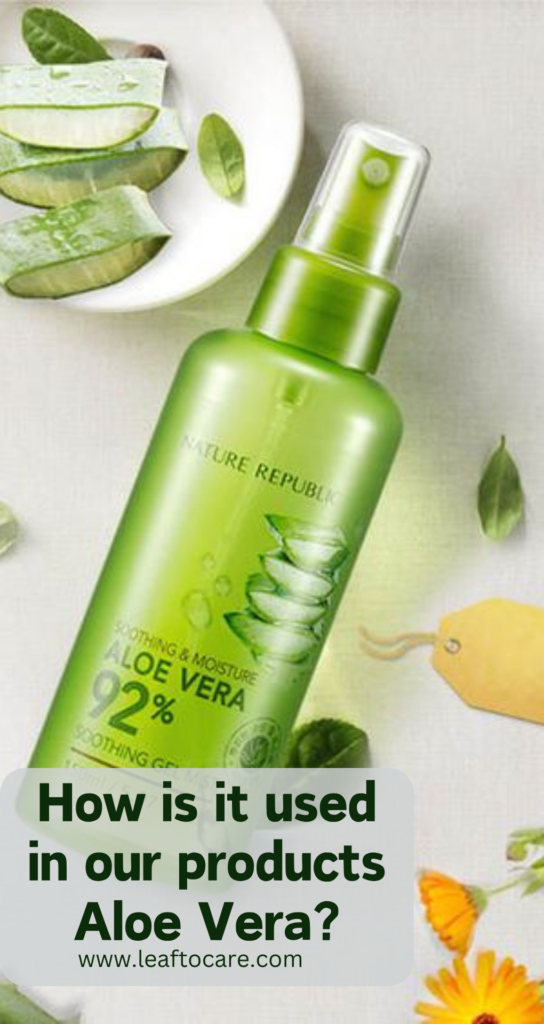
Aloe vera is used in our products for its skin-loving benefits. Depending on the type of product, we include aloe vera in either powder or juice form. In our skincare items, it’s added for its moisturising properties, keeping your skin feeling fresh. In our after-sun products, aloe vera helps soothe and moisturise, making it perfect for calming sun-exposed skin.
Medical Uses of Aloe Vera
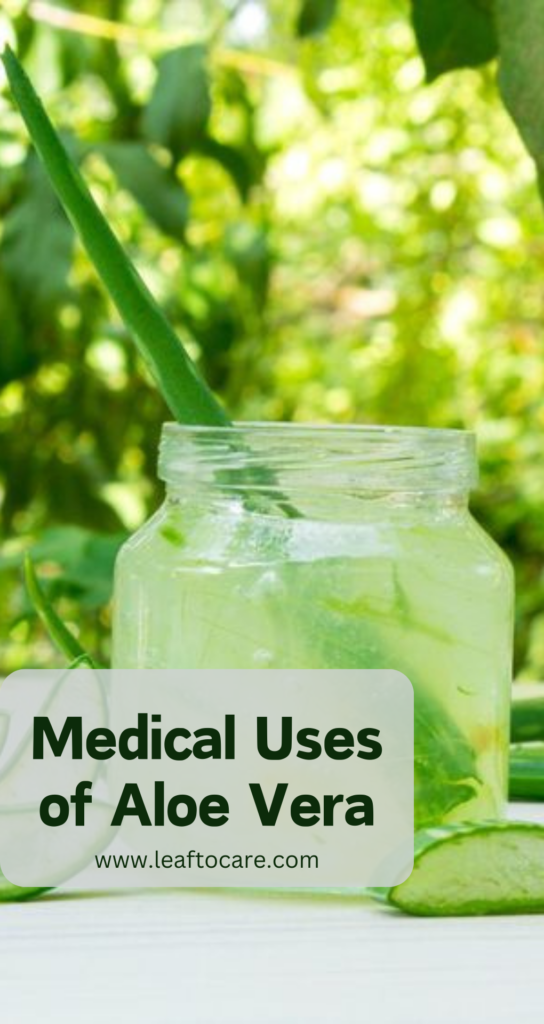
Aloe vera is commonly used for its medicinal properties, known for its soothing effects on skin burns and irritations. Its gel is rich in antioxidants and has anti-inflammatory properties, making it a popular remedy for sunburns and minor wounds. Additionally, aloe vera may aid in promoting skin healing and reducing inflammation when applied topically.
Aloe vera may provide other health benefits, such as:
- Easing heartburn, belching, and regurgitation in GERD
- Improving constipation
- Reducing blood sugar in people with diabetes
- Improving triglyceride and HDL cholesterol levels in people with diabetes
- Fighting cavities
Conclusion
In conclusion, knowing all about aloe vera reveals how amazing and useful it is. It’s like a superhero for our skin, helping it heal and stay healthy. Whether it’s in powder or juice, aloe vera is like a best friend in our skincare and after-sun products, making things better for our skin and hair. It’s a simple yet powerful plant that brings natural goodness to our daily routines.
FAQs
Is aloe water-soluble or fat-soluble?
The components in aloe are water-soluble, which means that they dissolve in your body’s abundant aqueous fluids.
How long does it take for your body to digest/absorb aloe?
Since aloe vera extract is water-soluble, it should only take your body around 24 hours to process and absorb this beneficial supplement.
Is aloe vera safe to use everyday?
Aloe vera is widely used for its medicinal properties and skin benefits. You can use aloe vera gel on your face every day to moisturise the skin and soothe minor irritation as long as you are not allergic.
What is the list of diseases cured by aloe vera juice?
Several studies have shown the positive effects of Aloe vera to treat wounds such as psoriasis, mouth sores, ulcers, diabetes, herpes, bedsores, and burn wounds.
Does aloe vera gel expire?
Aloe Vera gel has a normal expiration date of two to three years.
